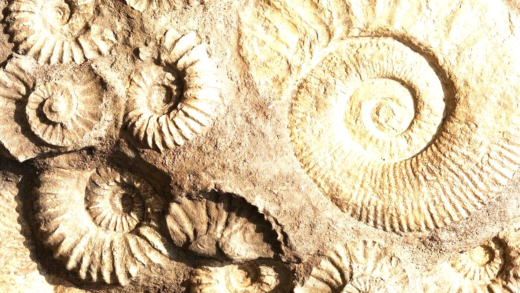UAPs, or Unidentified Aerial Phenomena, are increasingly recognized by scientists and government agencies as serious subjects of study. Misconceptions about UFOs, historical sightings, and the role of government bodies in investigating these phenomena are crucial aspects to consider. Evaluating UAP reports requires careful scrutiny of the source, corroborating evidence, and context, ensuring a rational discourse around these intriguing occurrences.
What Does UAP Stand For?
UAP stands for Unidentified Aerial Phenomena. This term has gained traction in recent years, replacing the older term UFO, which stands for Unidentified Flying Object. The shift in terminology signifies a more scientific approach to the study of these mysterious sightings. UAP encompasses a broader range of aerial incidents, including those that may not necessarily be flying objects in the traditional sense.
The significance of UAP lies in its emphasis on a systematic investigation of unidentified phenomena without the stigma often associated with UFOs. This new terminology allows scientists and researchers to discuss these incidents more openly and seriously. The public and government agencies are increasingly recognizing the need to study UAPs to understand their implications for national security and aerospace safety.
Misconceptions About UFOs
Many misconceptions surround UFOs, leading to a misunderstanding of what they truly represent. One common myth is that all UFO sightings are evidence of extraterrestrial life. In reality, many UAPs can be attributed to natural phenomena, human-made objects, or even misinterpretations of conventional aircraft.
- Myth 1: All UFOs are aliens.
- Myth 2: UFO sightings are always credible.
- Myth 3: The government hides all UFO information.
Clearing these misconceptions is essential for fostering a more informed discussion about UAPs. Recognizing that not every sighting indicates an alien presence can help mitigate the sensationalism often associated with the topic.
Historical Contexts of UFO Sightings
UFO sightings have a rich history, with notable incidents dating back to the early 20th century. For instance, the Roswell incident of 1947 is one of the most famous cases, where an alleged alien spacecraft reportedly crashed in New Mexico. This event sparked widespread media coverage and public fascination.
Other significant sightings include:
- The Phoenix Lights (1997) – A mass sighting of unexplained lights over Arizona.
- The Rendlesham Forest Incident (1980) – U.S. Air Force personnel reported encounters with UAPs near a military base in the UK.
These historical contexts provide insights into how public perception of UFOs has evolved. They highlight the blend of fear, curiosity, and skepticism that shapes our understanding of unidentified aerial phenomena.
Why Do Scientists Prefer UAP Over UFO?
Scientists prefer the term UAP over UFO for several reasons. Primarily, UAP conveys a more neutral and scientific perspective. The term UFO often carries a cultural baggage that can hinder serious inquiry. By using UAP, researchers aim to distance their work from sensationalism and focus on empirical investigation.
This shift in terminology reflects a broader acceptance within the scientific community to explore these phenomena. It encourages a rigorous approach to data collection and analysis, enhancing the credibility of research findings. Scientists believe that adopting the term UAP allows for a more open dialogue about the implications of these phenomena for aviation safety and national security.
Differences Between UAP and UFO
UAP and UFO represent two distinct concepts in the realm of unidentified aerial phenomena. UAP, or Unidentified Aerial Phenomena, is a broader and more scientifically oriented term. UFO, or Unidentified Flying Object, is often associated with extraterrestrial narratives and cultural myths. The differences can be summarized as follows:
- Terminology: UAP is preferred by scientists as it implies a neutral stance, while UFO often suggests alien involvement.
- Scope: UAP encompasses a wider array of phenomena, including those that may not fit traditional definitions of flying objects.
- Public Perception: UFO tends to evoke excitement and skepticism, while UAP invites serious investigation.
Understanding these differences is crucial for fostering informed discussions about aerial phenomena. By using UAP, researchers aim to eliminate sensationalism and focus on empirical data, which is essential for advancing our understanding of these mysterious occurrences.
Are UAPs Evidence of Extraterrestrial Life?
UAPs have sparked intense debate regarding their potential connection to extraterrestrial life. While many people immediately associate UAP sightings with aliens, it’s essential to approach this topic with a critical mindset. Not every UAP is evidence of extraterrestrial activity; many can be explained by natural phenomena or human-made objects.
Some key considerations include:
- Scientific Approach: Researchers emphasize the need for rigorous investigation before jumping to conclusions about alien life.
- Historical Context: Most famous UAP sightings have been investigated thoroughly, often revealing more mundane explanations.
- Ongoing Research: New technologies and methods are being developed to analyze UAPs, which may provide clearer insights into their nature.
While the possibility of extraterrestrial life remains a fascinating topic, it’s important to maintain a balanced view and focus on empirical evidence.
Recent Developments in UAP Research
Recent developments in UAP research have captured the attention of scientists and the public alike. Several government agencies, including the Pentagon, have initiated investigations into UAP sightings, acknowledging their potential implications for national security and aviation safety. Key developments include:
- Establishment of Task Forces: The U.S. government has formed task forces dedicated to studying UAPs, aiming to collect and analyze data systematically.
- Public Reports: More transparency has been observed, with some UAP reports being made public, allowing for broader scrutiny and analysis.
- Technological Advances: Improved radar and imaging technologies are being utilized to capture and analyze UAPs more effectively.
These advancements signify a shift towards serious scientific inquiry into UAPs, moving beyond speculation to a more grounded investigation.
Public Perception of UAPs vs UFOs
Public perception of UAPs and UFOs differs significantly. While UFOs are often viewed with skepticism or excitement, UAPs are increasingly recognized as a legitimate area of scientific inquiry. This shift can be attributed to several factors:
- Media Influence: Coverage of UAPs in mainstream media has contributed to a more serious discourse around these phenomena.
- Government Acknowledgment: Official recognition and investigation of UAPs by government agencies have lent credibility to the phenomenon.
- Public Interest: Growing interest in scientific exploration of UAPs has led to more informed discussions among the public.
Understanding how these terms are perceived can help demystify UAPs and promote a more rational approach to discussing unidentified aerial phenomena.
Government Agencies and UAP Research
Government agencies play a crucial role in studying UAP (Unidentified Aerial Phenomena). Their involvement often reflects a recognition of the potential implications these phenomena may have for national security and aerospace safety. Various agencies, including the Pentagon and NASA, have initiated investigations to better understand UAP sightings.
Key aspects of their involvement include:
- Data Collection: Agencies are tasked with gathering data on UAP sightings from military personnel, pilots, and civilians. This data is essential for analyzing patterns and identifying credible incidents.
- Collaboration with Experts: Government bodies often collaborate with scientists and researchers to enhance the investigation process. This partnership fosters a scientific approach to evaluating UAPs.
- Transparency Initiatives: In recent years, there has been a push for greater transparency regarding UAP reports. By releasing previously classified information, agencies aim to build public trust and encourage open discussions about these phenomena.
Ultimately, the role of government agencies in studying UAPs is pivotal for advancing our understanding of these mysterious occurrences and addressing public concerns regarding safety and security.
Evaluating UAP Reports
When it comes to UAP reports, evaluating their credibility is essential for separating fact from fiction. Not all sightings are created equal, and a systematic approach is necessary to assess their authenticity. Here are some guidelines to consider:
- Source Reliability: Determine the credibility of the source reporting the UAP. Military personnel or trained observers generally provide more reliable accounts than casual witnesses.
- Corroborating Evidence: Look for additional evidence supporting the sighting, such as radar data, photographic evidence, or multiple witness accounts. The presence of corroborating evidence strengthens the case for the reported phenomenon.
- Contextual Analysis: Consider the context of the sighting, including environmental conditions, time of day, and the location. Analyzing these factors can help identify potential explanations.
By applying these evaluation methods, individuals can contribute to a more informed discussion about UAPs, helping to clarify misconceptions and promote a scientific understanding of these phenomena.





Comments are closed.